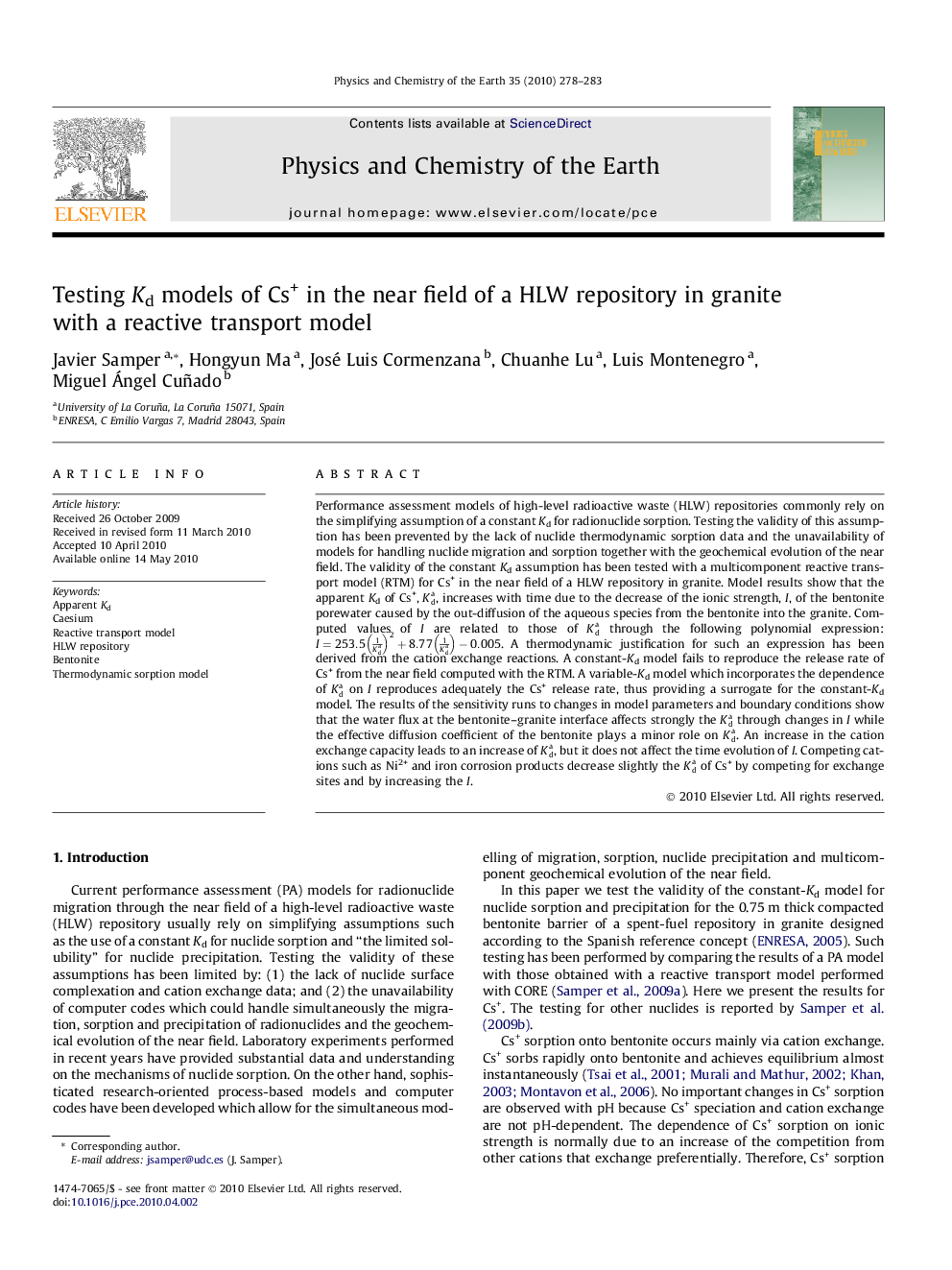| کد مقاله | کد نشریه | سال انتشار | مقاله انگلیسی | نسخه تمام متن |
|---|---|---|---|---|
| 4722054 | 1639384 | 2010 | 6 صفحه PDF | دانلود رایگان |
عنوان انگلیسی مقاله ISI
Testing Kd models of Cs+ in the near field of a HLW repository in granite with a reactive transport model
دانلود مقاله + سفارش ترجمه
دانلود مقاله ISI انگلیسی
رایگان برای ایرانیان
کلمات کلیدی
موضوعات مرتبط
مهندسی و علوم پایه
علوم زمین و سیارات
ژئوشیمی و پترولوژی
پیش نمایش صفحه اول مقاله

چکیده انگلیسی
Performance assessment models of high-level radioactive waste (HLW) repositories commonly rely on the simplifying assumption of a constant Kd for radionuclide sorption. Testing the validity of this assumption has been prevented by the lack of nuclide thermodynamic sorption data and the unavailability of models for handling nuclide migration and sorption together with the geochemical evolution of the near field. The validity of the constant Kd assumption has been tested with a multicomponent reactive transport model (RTM) for Cs+ in the near field of a HLW repository in granite. Model results show that the apparent Kd of Cs+, Kda, increases with time due to the decrease of the ionic strength, I, of the bentonite porewater caused by the out-diffusion of the aqueous species from the bentonite into the granite. Computed values of I are related to those of Kda through the following polynomial expression: I=253.51Kda2+8.771Kda-0.005. A thermodynamic justification for such an expression has been derived from the cation exchange reactions. A constant-Kd model fails to reproduce the release rate of Cs+ from the near field computed with the RTM. A variable-Kd model which incorporates the dependence of Kda on I reproduces adequately the Cs+ release rate, thus providing a surrogate for the constant-Kd model. The results of the sensitivity runs to changes in model parameters and boundary conditions show that the water flux at the bentonite-granite interface affects strongly the Kda through changes in I while the effective diffusion coefficient of the bentonite plays a minor role on Kda. An increase in the cation exchange capacity leads to an increase of Kda, but it does not affect the time evolution of I. Competing cations such as Ni2+ and iron corrosion products decrease slightly the Kda of Cs+ by competing for exchange sites and by increasing the I.
ناشر
Database: Elsevier - ScienceDirect (ساینس دایرکت)
Journal: Physics and Chemistry of the Earth, Parts A/B/C - Volume 35, Issues 6â8, 2010, Pages 278-283
Journal: Physics and Chemistry of the Earth, Parts A/B/C - Volume 35, Issues 6â8, 2010, Pages 278-283
نویسندگان
Javier Samper, Hongyun Ma, José Luis Cormenzana, Chuanhe Lu, Luis Montenegro, Miguel Ángel Cuñado,